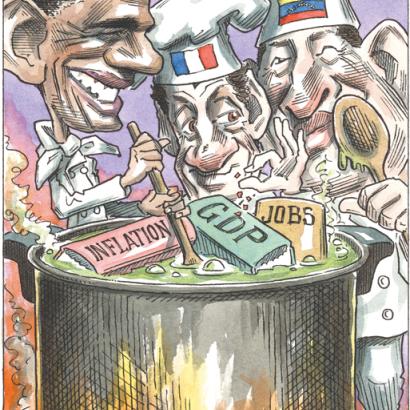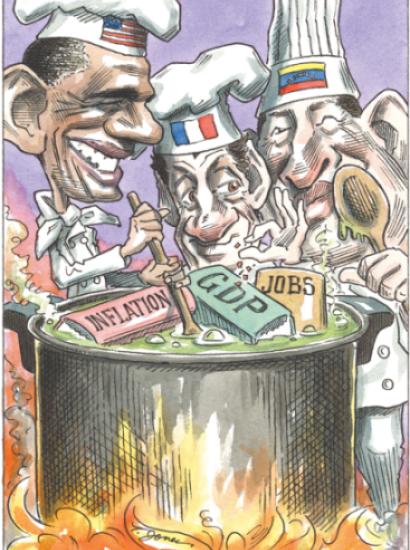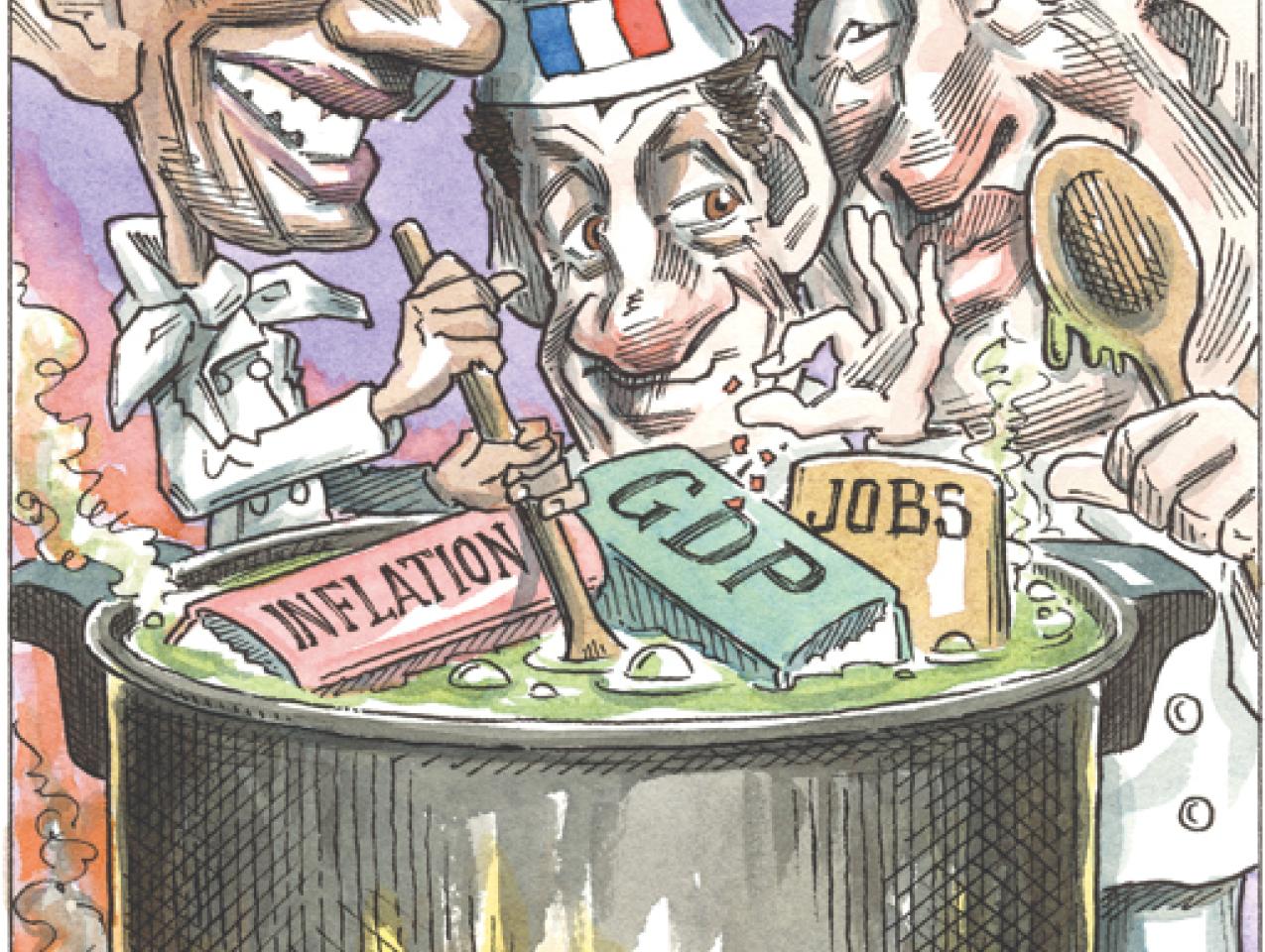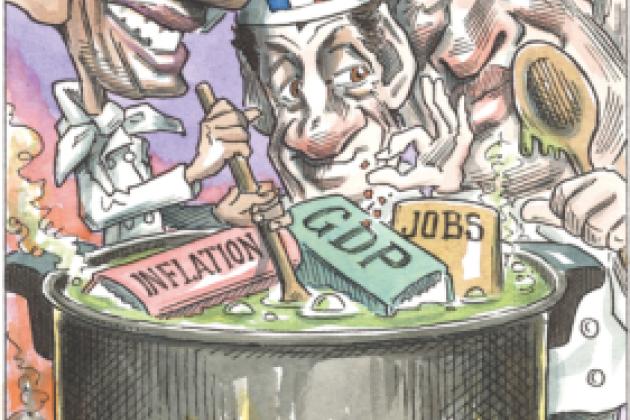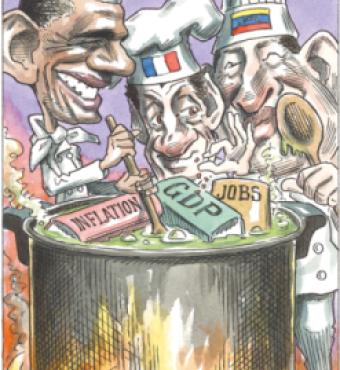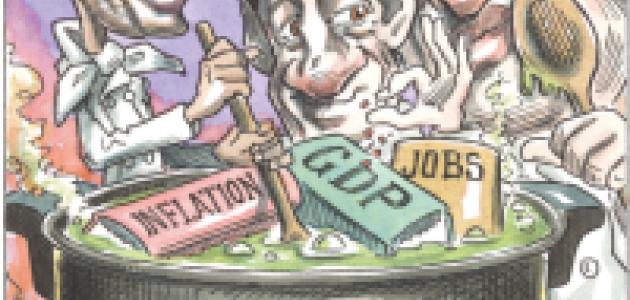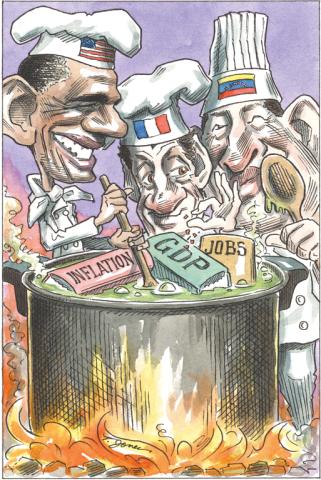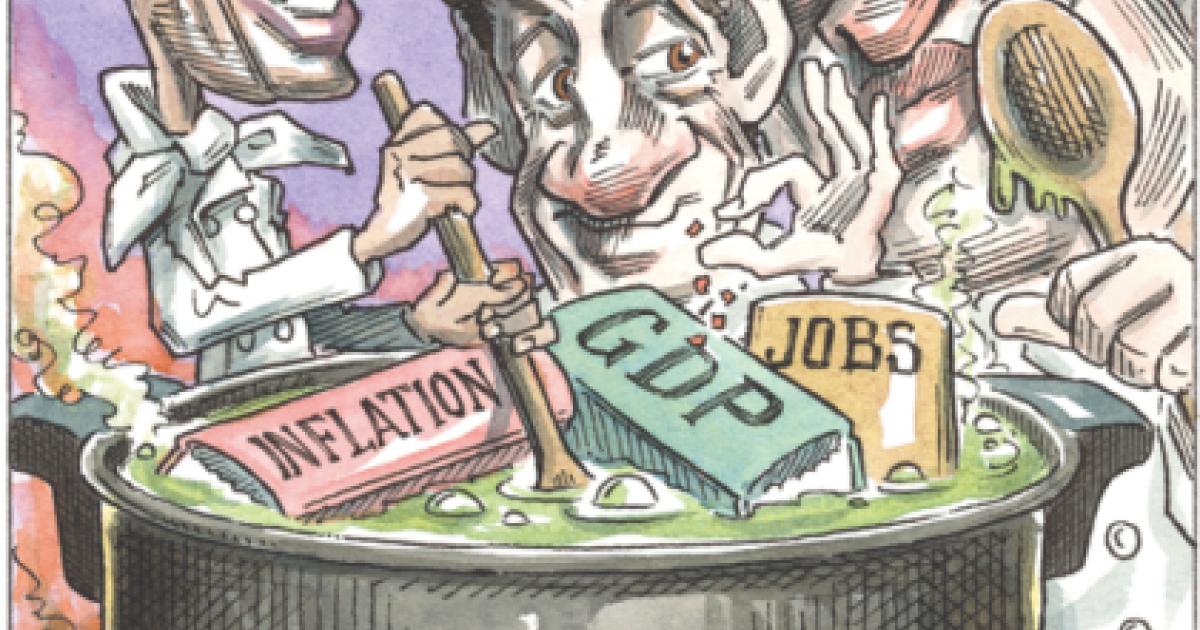- Budget & Spending
- Economics
- Law & Policy
- Regulation & Property Rights
- Economic
- Politics, Institutions, and Public Opinion
- Health Care
- History
Politicians and scientists who don’t like what their data show have taken to simply changing the numbers. They believe that their goal—socialism, global climate regulation, health care legislation, repudiating debt commitments, la gloire française—justifies throwing out even minimum standards of accuracy. It appears that no numbers are immune: gross domestic product, inflation, budget, job or cost estimates, or temperature. A CEO or CFO issuing such massaged numbers would land in jail.
The late economist Paul Samuelson called the national income accounts that measure real GDP and inflation “one of the greatest achievements of the twentieth century.” Yet politicians from Europe to South America are now clamoring for alternatives to make themselves look better.
A commission appointed by President Nicolas Sarkozy of France suggests heavily weighting “stability” indicators such as “security” and “equality” when calculating GDP. And voilà!—France outperforms the United States, despite the fact that its per capita income is 30 percent lower. Nobel laureate Ed Prescott called this income disparity the difference between “prosperity and depression” in a 2002 paper—and attributed it entirely to France’s higher taxes.
With Venezuela in recession by conventional GDP measures, President Hugo Chávez declared the GDP to be a capitalist plot. He wants a new, socialist-friendly way to measure the economy. Maybe East Germans were better off than their cousins in the West when the Berlin Wall fell; starving North Koreans are really better off than their relatives in South Korea; the 300 million Chinese lifted out of abject poverty in the past three decades were better off under Mao; and all those Cubans risking their lives fleeing to Florida on dinky boats are loco.
There is historical precedent for a “socialist GDP.” When President George H. W. Bush sent me to help Mikhail Gorbachev with economic reform, I found that the Soviet statistics office kept two sets of books: those it published and those it actually believed (plus another for Stalin, when he was alive).
In Argentina, President Néstor Kirchner didn’t like the political and budget hits from high inflation. After a politicized personnel purge in 2002, he changed the inflation measures. Conveniently, the new numbers showed lower inflation and therefore lower interest payments on the government’s inflation-linked bonds. Investor and public confidence in the objectivity of the inflation statistics evaporated. His wife and successor, Cristina Kirchner, is now trying to grab the central bank’s reserves to pay for the country’s debt.
GREENWASHING THE DATA
America has not been immune to this dangerous numbers game. Every president is guilty of spinning otherwise unpleasant statistics. President Nixon even thought there was a conspiracy against him at the Bureau of Labor Statistics. But President Obama has taken it to a new level. His laudable attempt at transparency in counting the number of jobs “created or saved” by the stimulus bill has degenerated into farce.
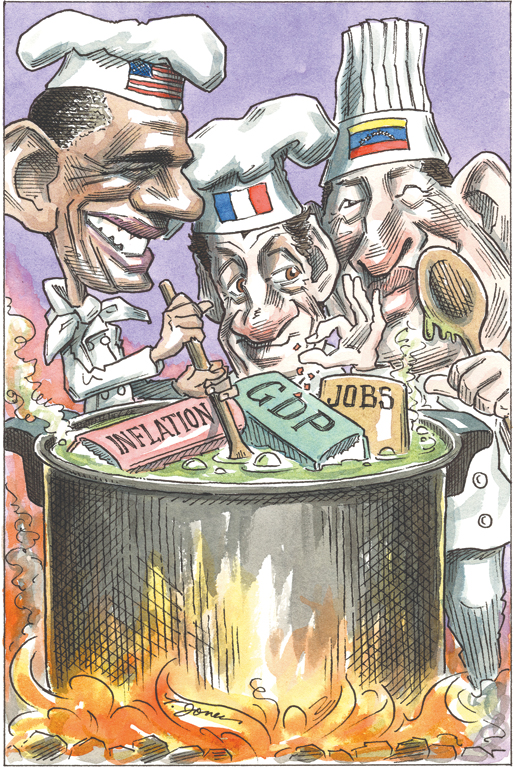
The administration has introduced a new notion of “jobs saved” to take credit where none was ever taken before. It seems continually to confuse gross and net numbers. For example, it misses the jobs lost or diverted by the fiscal stimulus. And, along with the congressional leadership, it hypes the number of “green jobs” likely to be created from the explosion of spending, subsidies, loans, and mandates, ignoring the job losses caused by its taxes, debt, regulations, and diktats.
The president and his advisers—their credibility already undercut by exaggeration (“the stimulus bill will limit unemployment to 8 percent”) and reneged campaign promises (“we’ll go through the budget line by line”)—consistently imply that their proposed regulations are a free lunch. When the radical attempt to regulate energy and the environment with the deeply flawed cap-and-trade bill is confronted with economic reality, instead of honestly debating the trade-offs they confidently pronounce that it boosts the economy. They refuse to admit that it simply boosts favored sectors and firms at the expense of everyone else.
Rabid environmentalists have descended into a separate reality where only green counts. The head of the California Air Resources Board, Mary Nichols, announced last fall that costly new carbon regulations would boost the economy, even though she had just been told by eight of the state’s most respected economists that they were certain the new rules would damage the economy. The next day, her own economic consultant, Harvard’s Robert Stavis, denounced her statement as a blatant distortion.
Scientists are expected to make sure their findings are replicable, to make the data available, and to encourage the search for new theories and data that might overturn the current consensus. That is what Galileo, Darwin, and Einstein did. But some climate researchers, most notably at the University of East Anglia, attempted to hide or delete temperature data when those data didn’t show recent rapid warming. They quietly suppressed and replaced the numbers and then tried to squelch publication of studies coming to different conclusions.
FOUNDATIONS OF DUBIOUS DATA
The Obama administration claims a dubious “Keynesian” multiplier of 1.5 to feed the Democrats’ thirst for big spending. The administration’s idea is that virtually all its spending creates jobs for unemployed people and that additional rounds of spending create still more—raising income by $1.50 for each dollar of government spending. Economists differ on such multipliers, with many leading figures pegging them at well under 1.0 because the government spending in part replaces private spending and jobs. But all agree that every dollar of spending requires a present value of a dollar of future taxes, which distorts decisions to work, save, and invest and raises the cost of the dollar of spending to well over a dollar. Thus, only spending with large societal benefits is justified, a criterion unlikely to be met by much current spending.
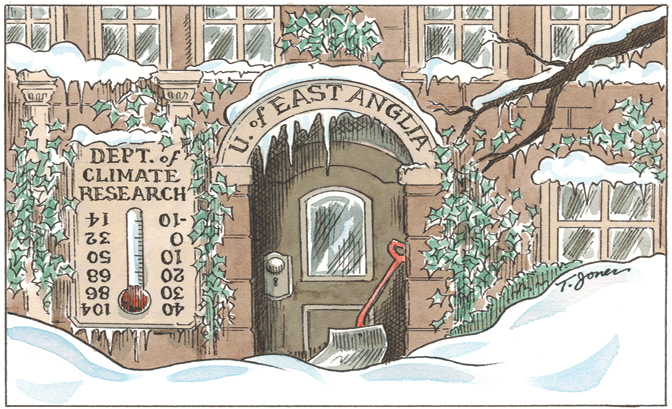
Even more blatant is the numbers game being used to justify the health insurance overhaul, which claims to greatly expand coverage, decrease health insurance costs, and reduce the deficit. That magic flows easily from counting ten years of dubious Medicare “savings” and tax hikes but only six years of spending; assuming large cuts in doctor reimbursements that later will be canceled; and making the states pay a big share of the cost by expanding Medicaid eligibility. The Medicare “savings” and payroll tax hikes are counted twice—first to help pay for expanded coverage and then to claim to extend the life of Medicare.
One piece of good news is that the public doubts much of this out-of-control spin. Large majorities believe that comprehensive health care reform will raise their insurance costs and increase the budget deficit. Most Americans are highly skeptical of the claims of climate extremists. And they have a more realistic reaction to the extraordinary deterioration in our public finances than do the president and Congress.
As a society and as individuals, we need to make difficult, even wrenching choices, often with grave consequences. To base those decisions on highly misleading, biased, and even manufactured numbers is not just wrong but dangerous.
Squandering their credibility with these numbers games will only make it more difficult for our elected leaders to enlist support for difficult decisions from a public increasingly disinclined to believe them.








